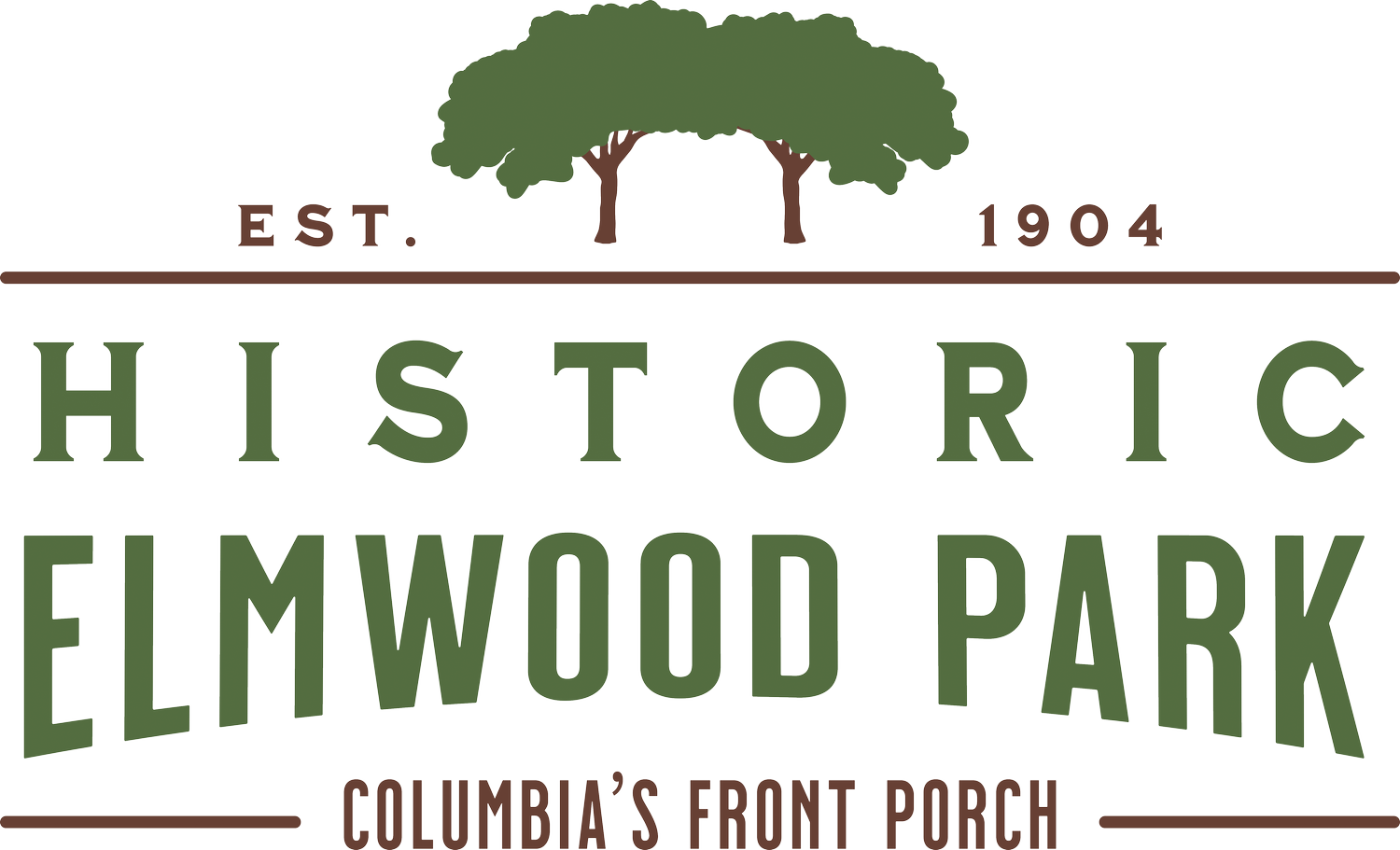Streets of Elmwood Park
-
Abbeville Street was formerly First Street until 1941. The first dwellings were built about 1910 with sixteen built by 1914.
-
Aiken Street was formerly Second Street until 1941. The first dwelling was built about 1907 with twelve built by 1914.
-
Barrett Street was first developed in 1917 with four homes near Park. From Park it went northeast to Main St.(Columbia Avenue at the time). Later, there were three business by the railroad tracks and seven homes on the southside. The businesses and and all but one apartment house were torn down in the eighties to make way for the abandoned proposal to extend 277 to Elmwood.
-
Belleview Street was originally Bellevue Avenue. It was developed in the mid 1920s.
-
Benton Street development started in the late nineteen thirties.
-
Bryan Street was formerly Bouknight’s Alley. A one-block length of Bouknight’s Alley was established prior to 1872. Bouknights had lived in this area for some time and had a grocery in the area in the late eighteen ninties. It was the first street to have dwellings and is one of the two streets that predates the establishment of Elmwood Park. Most development was from 1904 to 1907.
-
Cedar Street was developed in the mid30s before Benton was developed. It was a single block with ten homes in 1934. One home remains and it backs up unto Benton. The homes were torn down in the mid eighties to make way for the abandoned proposal to extend 277 to Elmwood.
-
Chester Street was formerly Third Street until 1941. The first dwelling was built about 1907.
-
Clark Street was named for Washington A. Clark, a prominent attorney who lived at 1003 Elmwood Avenue. He was one of the developers of Elmwood Park and also one of the developers of Douglas Cemetery. There was some development in 1910's near Bryan with continuing northward thru the 1930s.
-
Confederate Avenue was formerly Fourth Street before 1941. Confederate Avenue originally started at Main Street and run eastward. It was named for Home for Confederate Soldiers which was located at the east end. Development between Main and Clark did not occur until the 1930's and was considered Confederate Avenue.
-
Fernells Alley was above Price and east from 2409 Rembert to Main. At one time it had several houses including 3 slave quarters with no indoor plumbing or water. The houses and apartment that backed up to Fernell Alley from Price St were in terrible condition and had a lot of crime. Rembert Street was blocked off before Sulton to stop Fernell Alley residents going to Sulton St. Building on Fernell Alley were torn down in the eighties and Fernells Alley longer exists.
-
Kinard Court was named for neighborhood resident Melvin L. Kinard, Melvin Kinard, Sr was a co-owner of Kinard & Wiley's haberdashery, located where Kinard Court is today. In 1844 during a three day foot race and reel contest held in the business district with 1,500 spectators, Melvin attempted to create goodwill by throwing bits of clothing from the roof of his store. The Kinard Coutrt was developed in the mid- 1920's after Melvin Sr.s death. Melvin Kinard,Jr lived at 1023 Kinard Court.Item description
-
Maxcy Street was not named until the mid-thirties. Most of it was built much later.
-
Pope Street was probably named for/by the Pope family. Nathaniel Pope moved to Columbia in the 1850's and settled north of Elmwood and Price. He owned property on both sides of Main St. His son Thomas Clingman Pope, Sr had several children. He and his grandson Thomas Clingman Pope, Jr also remained in the area. They were in the meat business. Thomas Sr. died in 1927 at the age of 77. Thomas Clingman Pope, Jr. had no children. There were six home on Pope Street in 1927 when Thomas Sr. died.
-
Price Avenue is one of two streets that predate Elmwood Park. Mr. Nunnamaker moved into his house at 1105 Price Avenue before it was within the City limits. He had to put boards across the middle of the street in order to cross it as there was a creek ruinning down the middle. The street is said to be named for a Mr. Price who lived at 1112 Price Avenue.
-
Rembert Street was named by/for George R. Rembert, He was an attorney who sold the land to a development company. It was developed starting in 1911. It ran almost to Sulton Street, Fernells Alley ran east to the 2400 block to Main. The 2400 block was torn down along with Fernells Alley during revitalization. The end of Rembert was blocked off to prevent traffic going to Sulton Street.
-
Sulton Street was originally called Sultan. Development started in 1928. It ran two blocks from Pope almost to the end of Rembert.
-
Wayne Street was originally known as Logan Terrace. It was named for Anthony Wayne (1745 to 1796) of Pennsylvania. Approinted brigadier general in 1777, he fought at Brandywine, Germantown, and Monmouth. In 1779 Congress awarded him a medal for his victory at Stoney Point, New York. Wayne led Patriot forces into Savannah and Charleston after the 1782 British evacuation and, in 1794, commanded the troops who defeated the Indians at the Battle of Fallen Timbers. It was developed starting in 1912.

